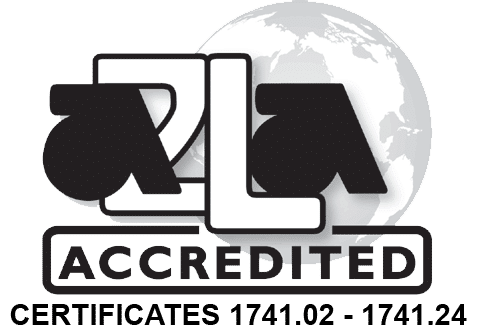One Stop Shop to help with Calibration Audits
Can using a single source calibration provider help with audits?
If you’ve ever been through an audit, you know that the goal is to get the auditor the information that they need quickly and get them out the door. These days everyone has too much work to do and not enough time to get it done. Spending unnecessary time on an audit can take you away from your normal tasks and result in lost productivity. Having a quality single-source calibration provider that is ISO 17025 accredited can absolutely help with that. Here are some of the key reasons why:
You can be confident that your calibrations were performed according to the proper procedures.
In order for a calibration lab to be ISO 17025 accredited, their quality system must have well-documented and validated procedures for each calibration parameter listed on their accreditation certificate. Technicians at accredited calibration labs are trained to perform according to the procedures. These procedures, the training program, and the standards used are all scrutinized by their accrediting body (ex. A2LA) to ensure that the requirements of the accreditation body and the industry are being met.
The calibration certificates include a clear reference to the procedure used as well as the standards that were used. This allows your auditor to quickly confirm that your equipment was calibrated properly using NIST traceable standards. There is no industry standard for what a calibration certificate should look like, so where this information is located on a certificate will vary from one provider to the next. Utilizing a single source reduces the variety of certificate formats, speeding up the audit process.
You have easy access to all the certs for your equipment.
While the mechanism for this may be different depending on your provider, you should have a quick and easy way to show your auditor the certs that they need. Cross Precision Measurement customers, for example, can access the certs for their equipment easily by scanning the QR code located on the calibration sticker. In addition, our customers can access all of their equipment records in our free cloud-based calibration tracking software, GageSuite. This portal allows customers to see both the current certificates as well as any past calibration certificates for each piece of equipment. If you are using multiple providers, tracking down the information that your auditor needs can quickly become cumbersome. This is particularly true if any of your providers only give you paper certs.
If there is an issue with anything during your audit, you only have one phone call to make.
In the middle of an audit, it’s reassuring to know that you can make one phone call to help you sort out any issues that might arise. Otherwise, you may be calling multiple companies to track down the calibration data and answers that you need. Also, ISO 17025 accreditation labs have extensive experience with auditors. In many cases, you can request that a representative from the calibration provider be present at your location to support you during the audit. This representative can then answer any questions the auditor might have about your calibration program. Changing “I’m not sure.” to “I got that!”
There are a number of additional benefits to using a single-source calibration provider. For example, it can improve the efficiency of your operation by allowing you to focus on what you do best while letting the provider manage your calibrations. Picking the right calibration provider can help you raise the quality of your product by ensuring you are using the best possible measurement data and making a more consistent product. Overall, trusting one calibration provider will make your job easier while ensuring that you continue to meet your quality targets.
To learn more about how Cross Precision Measurement can help to make audits less painful, contact us today. We have a team of measurement experts ready to answer your questions.
See How Our Precision Measurement Team Can Help Improve Quality, Increase Efficiency, And Reduce Risk
Latest Articles and White Papers
The reasons for automating manual processes are well known at this point. For tasks that are the 4D’s – dull, dirty, dangerous or difficult to fill – a robot or...

